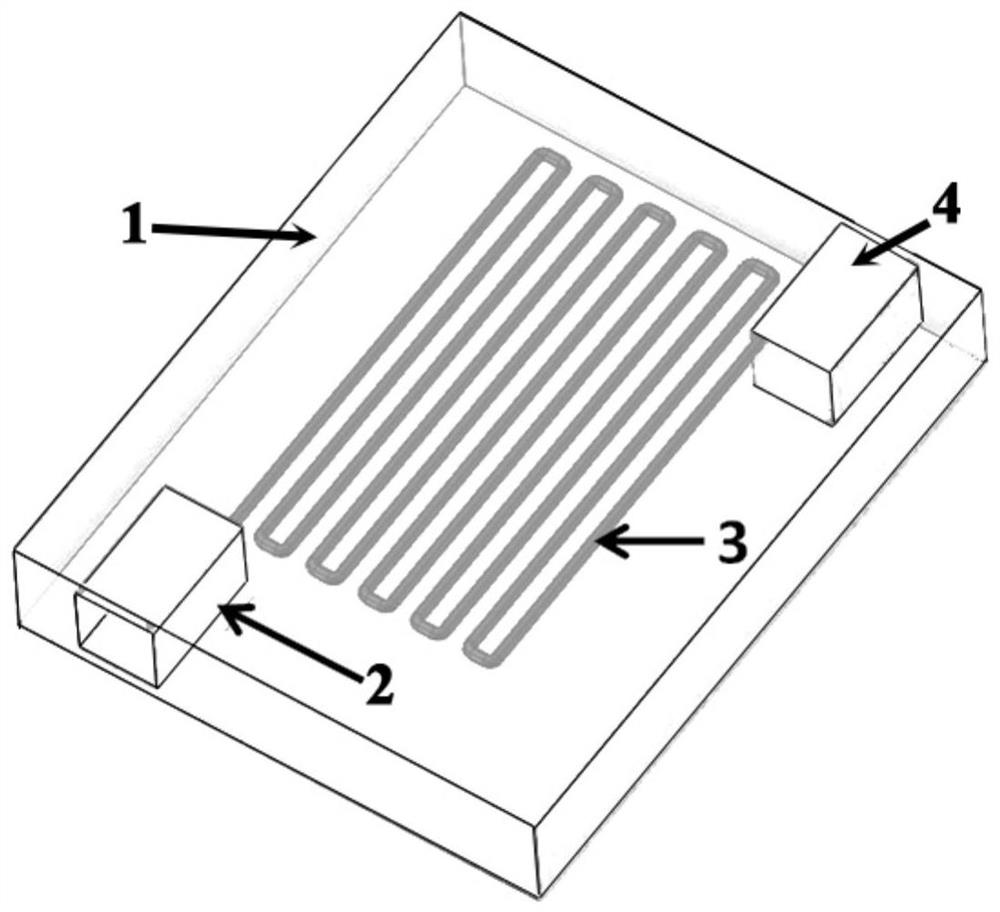Embedded microfluidic cooling channels inside optical components
A technology of optical components and cooling channels, applied in optical components, optics, instruments, etc., can solve problems such as thermal damage, thermal distortion of optical components, and restrictions on laser technology, and achieve low power consumption, high temperature control efficiency, and large heat dissipation area big effect
- Summary
- Abstract
- Description
- Claims
- Application Information
AI Technical Summary
Problems solved by technology
Method used
Image
Examples
Embodiment Construction
[0019] The present invention will be further described below in conjunction with the embodiments and accompanying drawings, but the protection scope of the present invention should not be limited thereby.
[0020] see figure 1 , as can be seen from the figure, the optical element of the present invention is embedded with a microfluid heat dissipation channel, and a connected microfluid heat dissipation channel 3 is prepared inside the optical element 1 by using femtosecond laser processing technology. The microfluid heat dissipation channel 3 has a liquid injection Inlet 2 and Outlet 4.
[0021] The optical element 1 is an optical element prepared from optical glass, single crystal silicon, or germanium sheet, or an optical element coated with an optical thin film.
[0022] The diameter of the microfluid cooling channel 3 ranges from 1 μm to 1000 μm.
[0023] The liquid is cooling oil or water.
[0024] The purpose of the present invention is to make the liquid flow in from...
PUM
| Property | Measurement | Unit |
|---|---|---|
| diameter | aaaaa | aaaaa |
Abstract
Description
Claims
Application Information
 Login to View More
Login to View More - R&D
- Intellectual Property
- Life Sciences
- Materials
- Tech Scout
- Unparalleled Data Quality
- Higher Quality Content
- 60% Fewer Hallucinations
Browse by: Latest US Patents, China's latest patents, Technical Efficacy Thesaurus, Application Domain, Technology Topic, Popular Technical Reports.
© 2025 PatSnap. All rights reserved.Legal|Privacy policy|Modern Slavery Act Transparency Statement|Sitemap|About US| Contact US: help@patsnap.com

